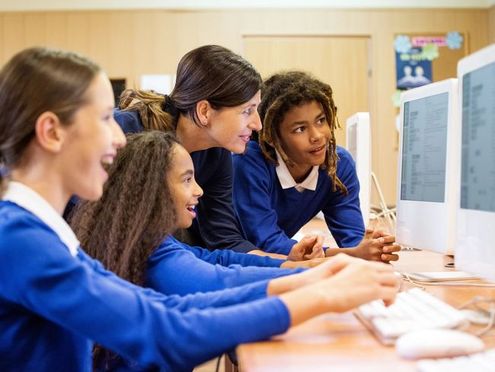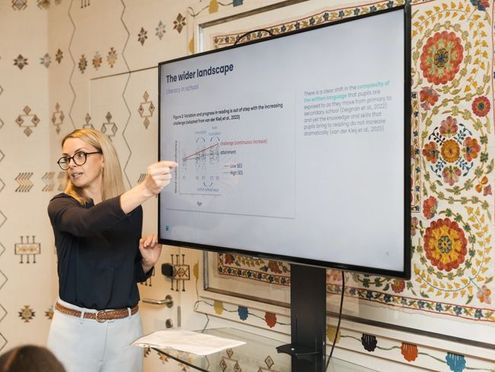Why should we make knowledge visible?
Making knowledge processes visible in your classroom is helpful to many aspects of learning.
- It helps learners visualise the processes they go through when learning, providing structure that helps them make the most out of lessons.
- Flowcharts highlight when learners should persevere or repeat steps, giving those struggling the push they need.
- Classroom resources make visible the structure of learning in all lessons – this could inspire other teachers to make their own resources, increasing the benefits of visible knowledge!
However, there isn’t just one way to make knowledge visible in your classroom – the methods you use will depend on your class! But just to start things off, we have compiled three tips for making knowledge visible as a starting point; you can then fit these to the specific needs of your classroom.
3 ways to make knowledge more visible
1. Make visual aids
So much of how we learn is completely invisible to us. We don’t see the processes that help us gain knowledge, and therefore we may struggle to harness those processes to teach efficiently.
Using visual aid, such as knowledge organisers, to demonstrate how we learn is incredibly beneficial; this creates a constant structure to refer back to, helping learners self-motivate themselves when they get stuck on a particular step in the learning process.
But showing the process of learning isn’t the only way a visual aid can be beneficial. Visual aids help learners to think critically about new information.
Visual aids can be hugely beneficial for teachers, also – they provide a common reference around which to frame your lessons. This reference point helps learners work self-sufficiently and reflect on their learning independently.
2. Use timelines
Timelines can be useful tools for every subject, not just History. Having a clear diagram to contextualise knowledge can make large chunks of information much easier to visualise and contextualise, increasing comprehension. Check out timelines such as the Mathigon Timeline of Mathematics or the National Geographic Timeline for inspiration.
3. Show off your Bedrock resources!
Bedrock has plenty of resources ready to be printed out, stuck to walls and shared among learners. Perhaps having a visualisation of roots and affixes could benefit your vocabulary tuition! Bedrock’s resources are designed to help make learning visible.
If you’re especially proud of a classroom visual aid you’ve designed, feel free to send it to us on our Twitter – we’d love to see the ways you’re making knowledge more visible in your classroom!




